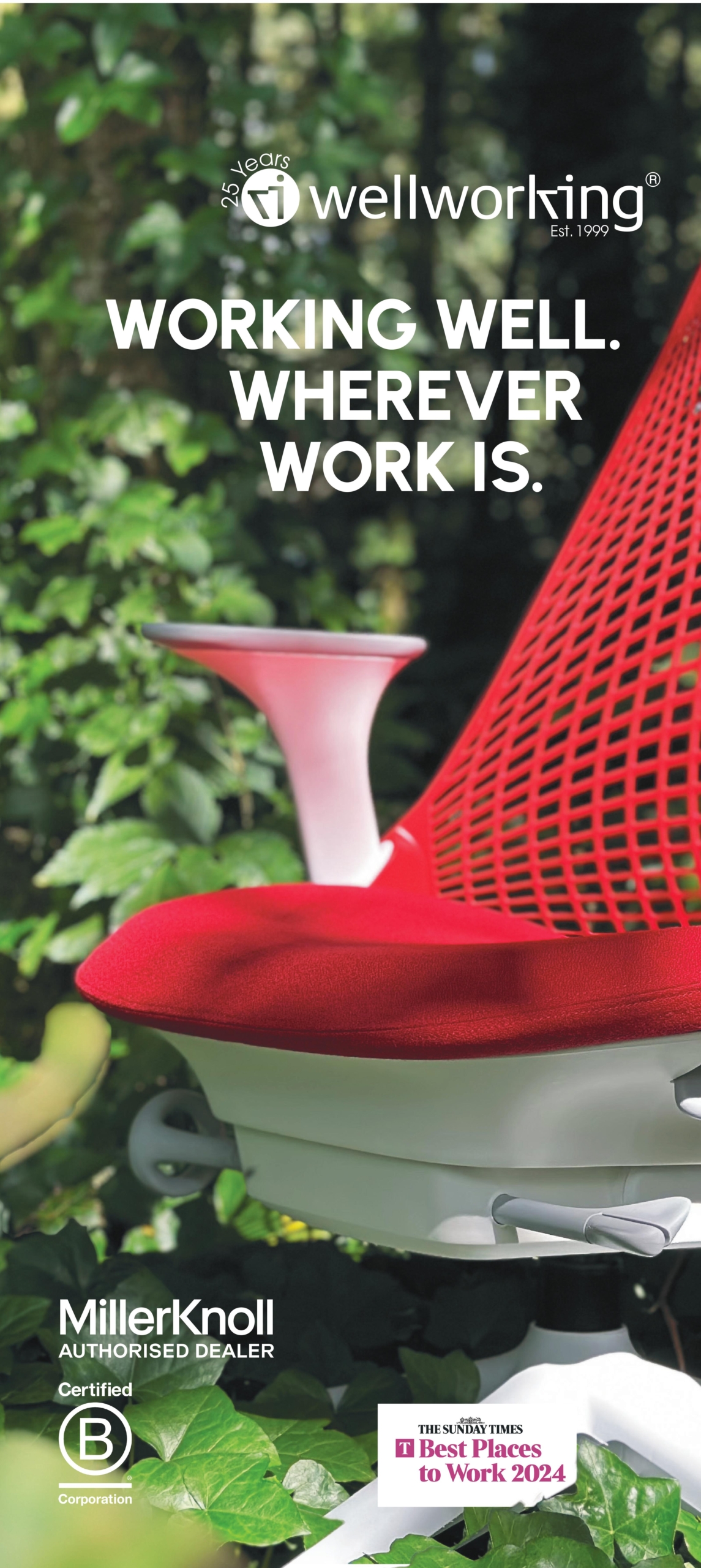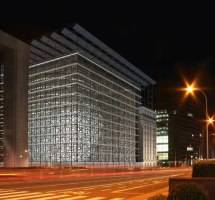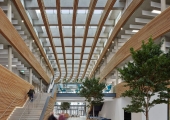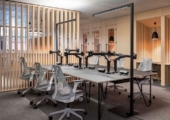November 25, 2014
London Mayor names Business Energy Challenge Gold award winners
 London mayor Boris Johnson has presented RICS, JLL, EC Harris LLP, ExCeL London (above), Intu, and Linklaters LLP, with Gold awards at the Business Energy Challenge awards, which celebrate private sector businesses that have made the biggest cuts to their energy consumption and use cleaner, greener sources of energy. Fifty-nine participants had submitted data over a six week period and were assessed on the carbon intensity per square metre of their properties; with 27 of the most successful being given a Bronze, Silver or Gold award to recognise their efforts when compared against their baseline 2010/11 energy usage. Around 75 per cent of London’s carbon dioxide (CO2) emissions come from buildings, with workplaces accounting for 42 per cent of total emissions. With 80 per cent of London’s buildings likely still to be operational in 50 years’ time and with much of that estate being energy inefficient the Mayor has set out a building retrofit programme. The Business Energy Challenge aims to challenge the commercial sector to take action and improve its energy efficiency to help save on operational costs. More →
London mayor Boris Johnson has presented RICS, JLL, EC Harris LLP, ExCeL London (above), Intu, and Linklaters LLP, with Gold awards at the Business Energy Challenge awards, which celebrate private sector businesses that have made the biggest cuts to their energy consumption and use cleaner, greener sources of energy. Fifty-nine participants had submitted data over a six week period and were assessed on the carbon intensity per square metre of their properties; with 27 of the most successful being given a Bronze, Silver or Gold award to recognise their efforts when compared against their baseline 2010/11 energy usage. Around 75 per cent of London’s carbon dioxide (CO2) emissions come from buildings, with workplaces accounting for 42 per cent of total emissions. With 80 per cent of London’s buildings likely still to be operational in 50 years’ time and with much of that estate being energy inefficient the Mayor has set out a building retrofit programme. The Business Energy Challenge aims to challenge the commercial sector to take action and improve its energy efficiency to help save on operational costs. More →










 There is now an unstoppable energy for radical change in the way that companies of all sizes conduct their Corporate Social Responsibility duties. There are compelling economic and social reasons for companies to construct new ways of thinking and practice around CSR that go way beyond just doing something worthy or nice, from building effective partnerships to attracting top employees. Some companies prefer terms like ‘corporate responsibility’, ‘corporate conscience’, ‘corporate citizenship’, ‘social performance’, ‘sustainability’ or even ‘future-proofing’ over CSR. But the core CSR principles are that a business voluntarily commits to embracing responsibility for its actions and to impacting positively on the environment, on society and on consumers, employees and other stakeholders.
There is now an unstoppable energy for radical change in the way that companies of all sizes conduct their Corporate Social Responsibility duties. There are compelling economic and social reasons for companies to construct new ways of thinking and practice around CSR that go way beyond just doing something worthy or nice, from building effective partnerships to attracting top employees. Some companies prefer terms like ‘corporate responsibility’, ‘corporate conscience’, ‘corporate citizenship’, ‘social performance’, ‘sustainability’ or even ‘future-proofing’ over CSR. But the core CSR principles are that a business voluntarily commits to embracing responsibility for its actions and to impacting positively on the environment, on society and on consumers, employees and other stakeholders. 











November 7, 2014
Orgatec 2014 focuses on collaboration, quiet and wellbeing in the workplace
by Anna King • Comment, Events, Furniture, Workplace design
Anna King reports from the biennial office furniture and interiors fair Orgatec, which took place recently in Cologne: Collaboration seemed to be king once again at this year’s Orgatec trade fair in Cologne, so much so that you’d be hard pressed to find a conventional workstation amongst the thousands of products on display. Even ergonomic task chairs in the traditional sense were thin on the ground. Senator’s offering was typical in its focus on collaborative work and the provision of work settings. As well as the Ad-Lib Scholar range for educational establishments, it presented the Ad-Lib Work Lounge multipurpose chair, both the work of British design studio PearsonLloyd. This upholstered model complete with headrest is available on glides or castors so it can slot into a multitude of workplace scenarios. Shown in some rich shades such as moss green and turquoise, it comes complete with a fold-down worksurface for brainstorming or other group working.
More →